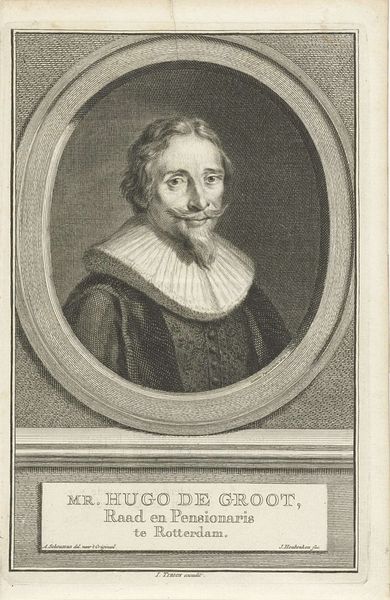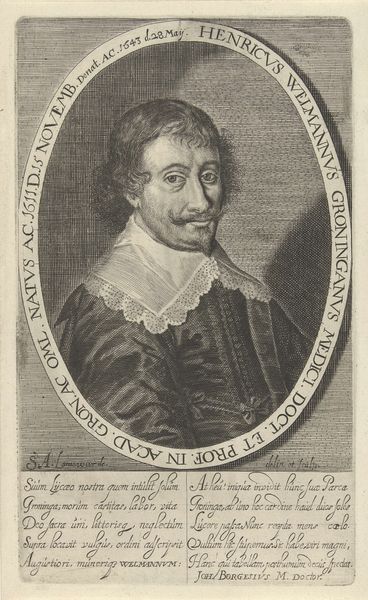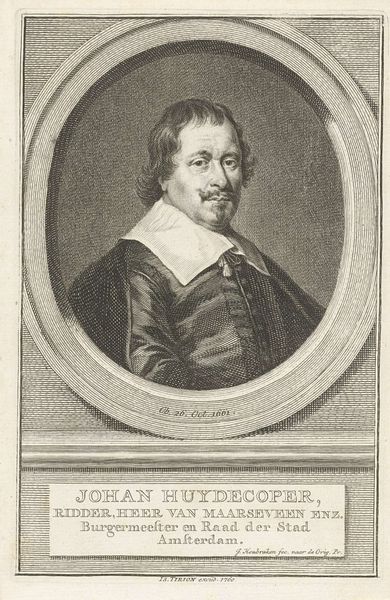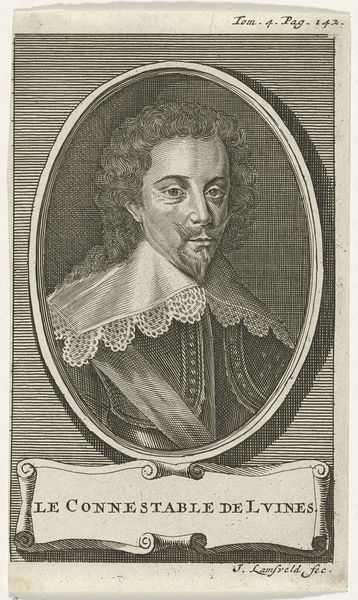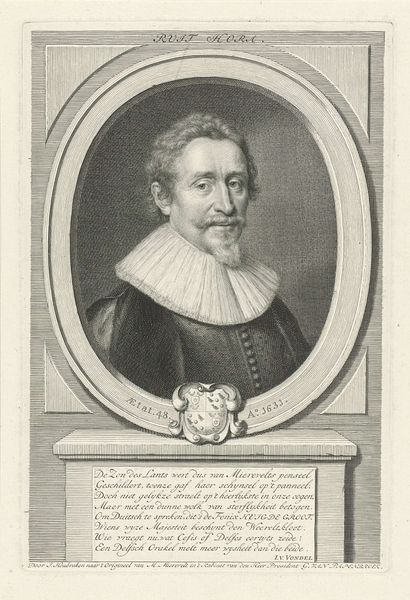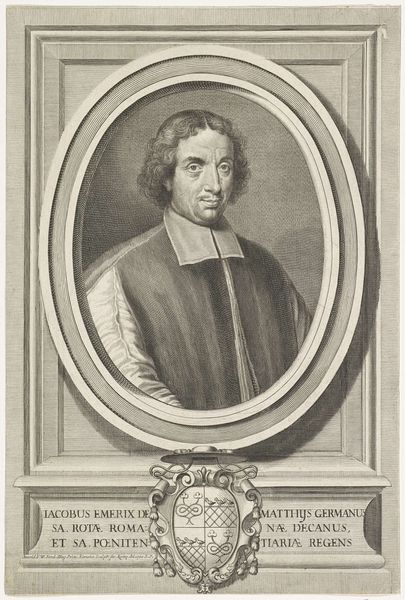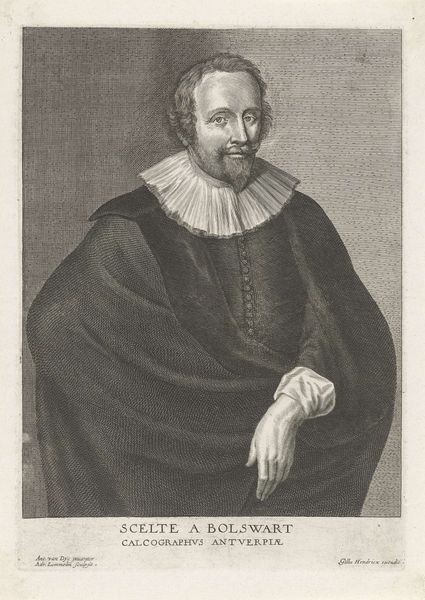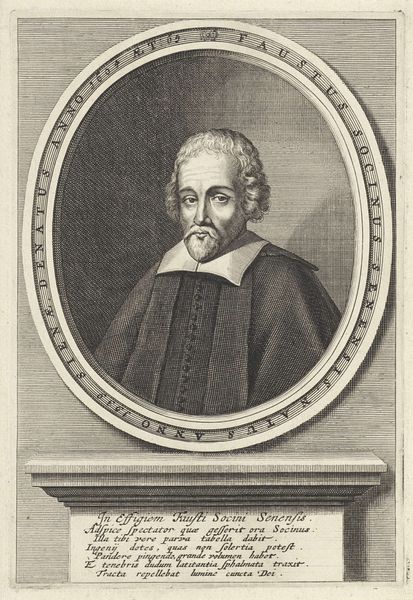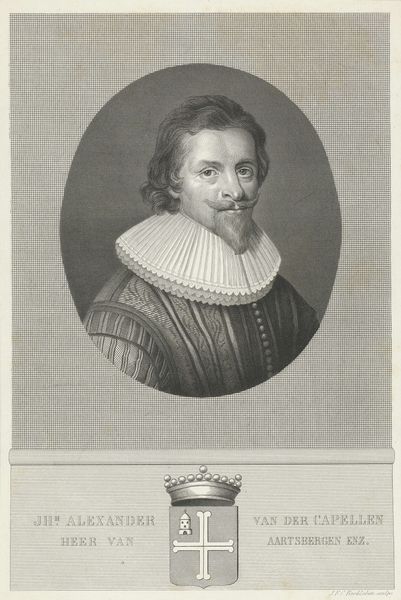
engraving
#
portrait
#
baroque
#
old engraving style
#
historical photography
#
history-painting
#
engraving
Dimensions: height 130 mm, width 80 mm
Copyright: Rijks Museum: Open Domain
Editor: This engraving, "Portret van Thomas Wentworth" from 1711 by Gilbert Schoute, gives off such a stern and stately impression. It’s intriguing, but I am not entirely sure how to decode its message. How do you interpret this work within its historical context? Curator: Well, first off, it’s worth mentioning that portraiture in the Baroque era, particularly of political figures, was always a calculated display of power. Think about Wentworth, who he was, and what this image tries to convey. The formal presentation isn't just about appearance; it reflects societal power dynamics and the subject's role within those structures. What elements in the portrait seem most aimed to inspire respect and a certain feeling of difference? Editor: Definitely the formal clothing, the high collar, and the fact that it's an engraving must indicate that it could be widely distributed. Curator: Exactly. And consider the context – Wentworth was a controversial figure in English history, ultimately executed for treason. This image, produced posthumously, participates in the ongoing narratives around his legacy, perhaps seeking to rehabilitate his image. What implications can we draw from how Wentworth's image was crafted and circulated during this turbulent time? Editor: It's almost like it’s pushing against a counter-narrative? He seems defiant despite whatever actions caused this engraving to exist in the first place. It's an assertion of power regardless of its veracity. I can see how art history and contemporary theory encourage us to look deeper into those intersectional narratives about race and politics. I never would have picked up on that! Curator: Precisely! It urges us to critically assess visual language and power. It prompts us to explore the sociopolitical forces at play, allowing for a more informed and inclusive art experience. Editor: That’s incredibly insightful! I appreciate learning how to view art not just as an aesthetic creation, but as a product of political and social negotiation.
Comments
No comments
Be the first to comment and join the conversation on the ultimate creative platform.
